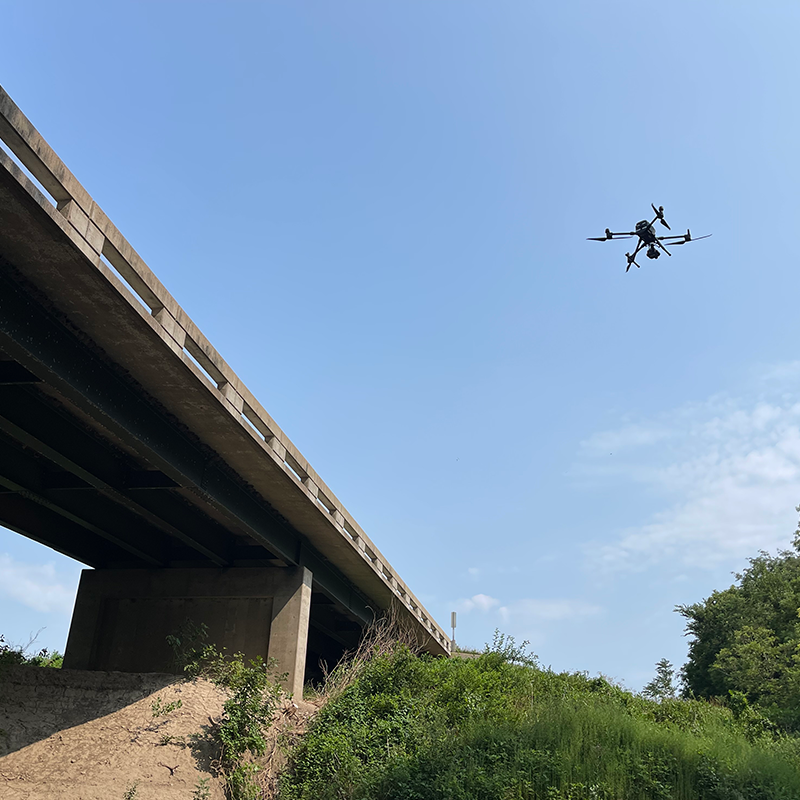News Story
Giving Rubberneckers Less to See
When a major traffic accident occurs on the Capital Beltway, vehicles in one direction come to a standstill while motorists in the opposite direction slow down for a good look. Area traffic officials face the daily struggle to clear away such incidents while notifying other road and emergency agencies so they can help warn motorists about the incident.
Researchers in the civil engineering department at the A. James Clark School of Engineering have developed a new automated incident information sharing system for traffic control experts and emergency workers.
"The sooner emergency management officials arrive on-scene, notify the public, and return the road to normal operation, the fewer injuries, economic waste, pollution and headaches can be expected," said Michael Pack, laboratory director of the Clark School's Center for Advanced Transportation Technology Laboratory (CATT Lab) at the University of Maryland. "Accurate, timely information about traffic incidents helps transportation agencies to manage traffic and notify motorists sooner, so they can pick alternate routes."
This month, the four largest agencies in charge of traffic management and transportation in the Washington, D.C.-metro area for the first time will be able to electronically collaborate with each other real-time while resolving accidents and other travel-related emergencies on the area's roadways.
CATT engineers have completed the first phase of development of the Regional Integrated Transportation Information System (RITIS), which will allow local agencies to easily share information about accidents, traffic, and other roadway incidents. It is an initiative of the Metropolitan Area Transportation Operations Coordination program and is funded by $1.9 million in federal money.
The interactive system features maps, lists and other innovative graphics that convey real-time incident information, including who is on the scene, who has been notified and is en route, weather conditions, video feeds, traffic sensor data, etc. This valuable information is integrated into the agencies' native incident management software systems and also presented on the web. Before RITIS existed, transportation and emergency management officials had to rely on phone calls and other human initiated systems to keep each other updated.
The Problem
The Washington Metropolitan Area is unique in that there are four major transportation agencies and countless emergency management groups (each with separate communication and data systems) that could respond to traffic incidents in and around the relatively small geographic region of the Capital Beltway.
Until now, there has been only very limited automated data sharing before, Pack said.
"Current procedures require that individuals remember to pick up the phone and call one another for notification purposes," Pack explained. "The burdens of dealing with multiple complex incidents, often involving serious personal injury, can make it difficult for even the most seasoned incident manager to notify and communicate with the many agencies critical to resolve a situation."
Statistics show that secondary crashes caused by rubberneckers craning to view other accidents account for 20 percent of all traffic incidents (not to mention further slowing traffic). The chance of a secondary crash occurring increases almost 3 percent for every minute the first accident remains a hazard, according to the U.S. Department of Transportation.
"The sooner an agency is notified about an incident, the sooner the incident can be managed and resolved, which helps decrease the likelihood of additional incidents and delays," Pack said. "Quick notification also helps to alert the public who can then make better informed travel decisions."
The Solution
The RITIS system will automatically notify emergency management personnel of regional incident details, help to coordinate construction schedules, and supplement communications to help officials determine the most efficient way to deal with transportation crises as they arise.
Initial participants include the transportation departments of Virginia, Maryland and Washington, D.C., along with the Washington Metropolitan Area Transit Administration, and the Capital Wireless Information Net (CapWIN) system. Other local traffic management, transit, and emergency management agencies will be added to RITIS as time progresses.
"Timely notification of transportation incidents is particularly critical," Pack said. "The potential economic and social benefits of the RITIS system are enormous."
The system will be the foundation for an anticipated regional 511 phone system that will provide roadway status information to the traveling public.
Published July 17, 2007









